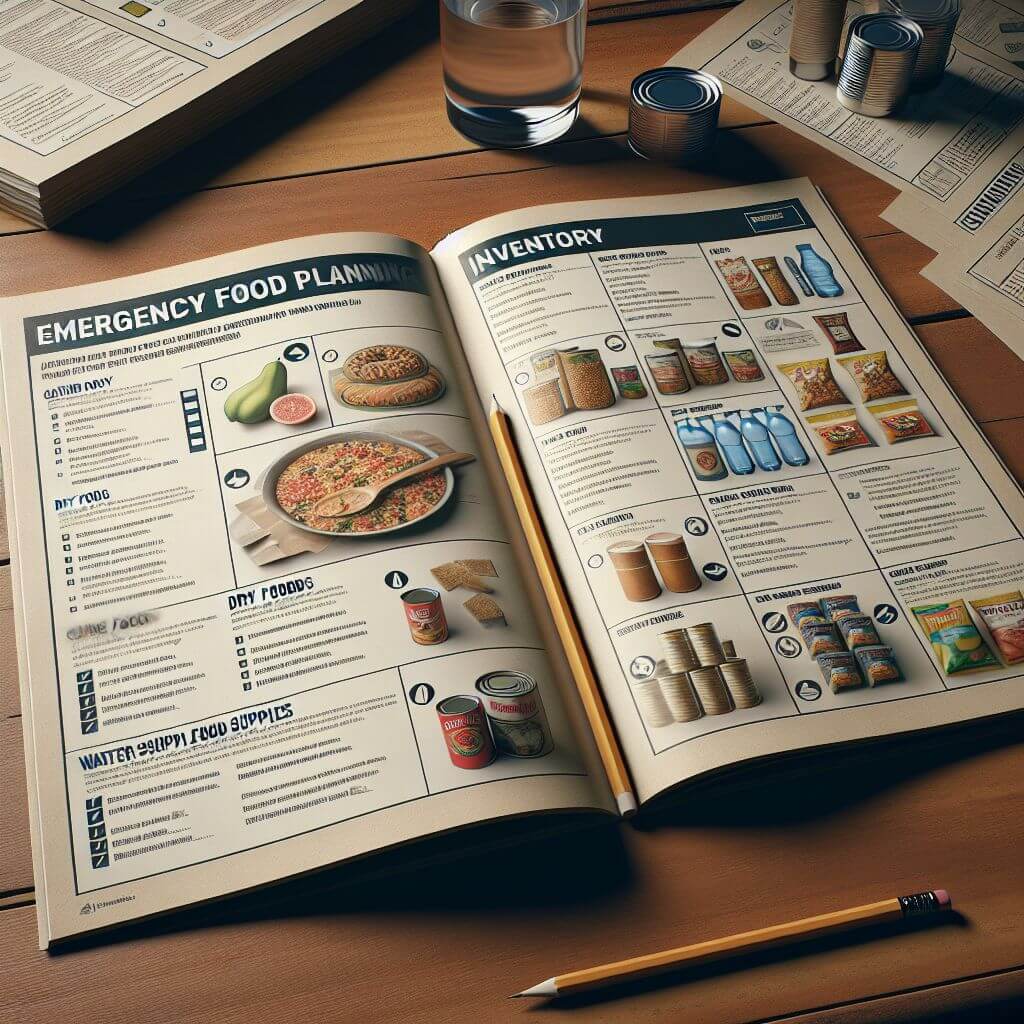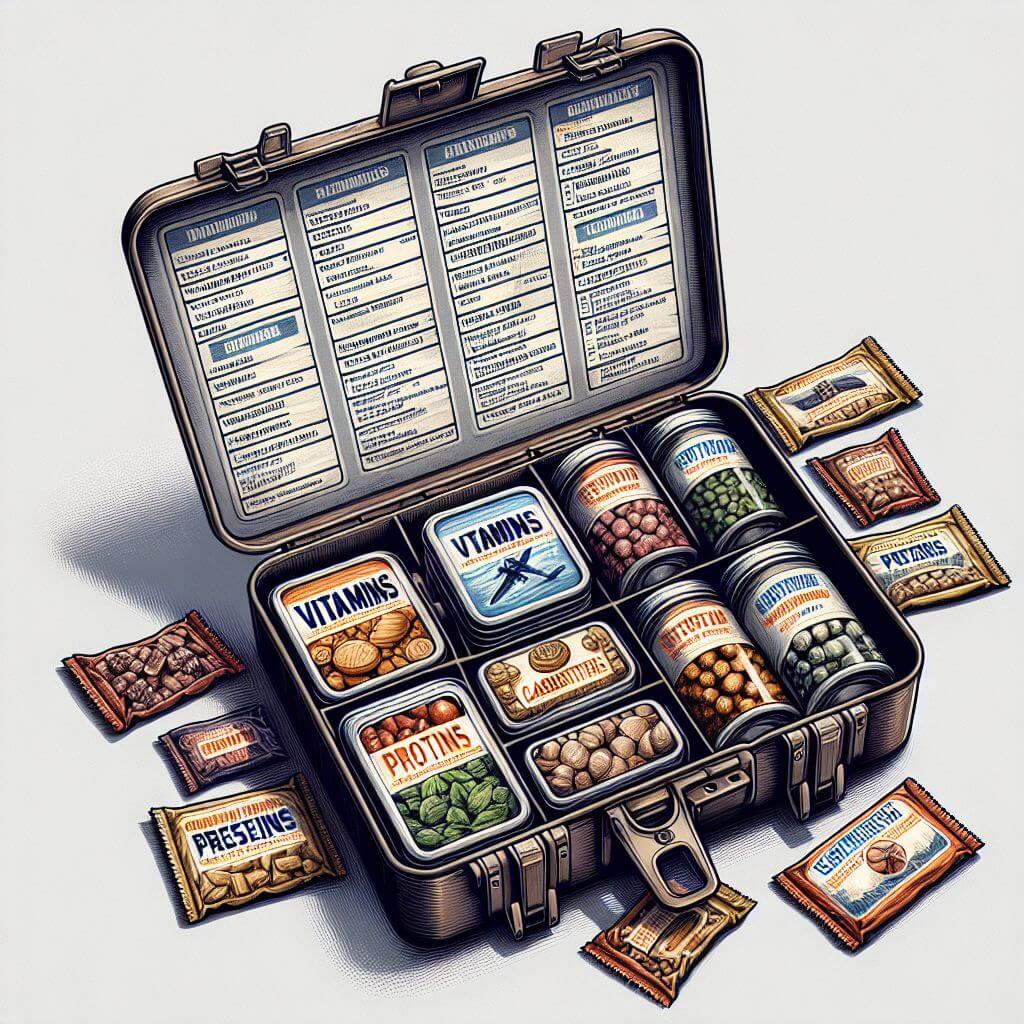
Key Takeaways: A Quick Guide to Nutrition in a Crisis
- Understand the importance of caloric and nutritional needs in emergency planning.
- Discover the psychological benefits of being prepared with a nutrient-rich emergency food supply.
- Learn about the key components of a balanced emergency diet and how to choose foods with long shelf lives.
- Get tips on how to plan nutritious and satisfying meals for breakfast, lunch, and dinner.
- Address dietary restrictions and ensure everyone in your household is catered for during emergencies.
Why Long-Term Nutritional Planning Matters
When you’re faced with an emergency, the last thing you want is to worry about where your next meal is coming from. Whether it’s a natural disaster, a power outage, or a global crisis, having a long-term emergency food plan ensures you and your loved ones maintain strength, health, and peace of mind. This isn’t just about filling your pantry with random cans and packages; it’s about smart, nutrient-rich meal planning that will sustain you through uncertain times.
Caloric and Nutritional Needs in Emergencies
In an emergency, your body’s nutritional demands can increase, especially if you’re dealing with stress or physical exertion. Adults typically need around 2,000 to 2,500 calories per day, but this can vary based on age, gender, and activity level. Your emergency food stash must provide sufficient calories and a balance of proteins, carbohydrates, and fats to keep everyone energized and healthy.
Most importantly, you need to include a variety of vitamins and minerals in your emergency diet. A lack of these can lead to deficiencies and weaken your immune system, which is the last thing you need in a crisis.
Psychological Benefits of Preparedness
Knowing you have a plan and the resources to take care of your family can significantly reduce anxiety and stress during an emergency. Preparedness boosts your confidence and gives you a sense of control in unpredictable situations. And let’s not forget, having familiar and tasty foods can be a huge comfort when everything else is in disarray.
Building Your Emergency Food Foundation
Key Components of a Balanced Emergency Diet
A well-rounded emergency food supply includes:
- Proteins for muscle repair and growth.
- Carbohydrates for quick energy.
- Fats for long-term energy and nutrient absorption.
- Vitamins and minerals to support body functions.
Therefore, your pantry should have a mix of canned and dried meats, beans, whole grains, dried fruits and vegetables, nuts, and seeds. Besides that, don’t forget comfort foods like powdered milk, instant coffee, and chocolate to help keep spirits high.
Choosing Foods with the Longest Shelf Lives
When selecting foods for your emergency stash, opt for those with the longest shelf lives. Canned goods can last for years, and dried foods like rice, beans, and pasta are also excellent staples. Freeze-dried meals are a fantastic option too; they’re lightweight, easy to prepare, and can last up to 25 years if stored correctly.
Planning Meals That Last and Satisfy
Breakfast: Energizing Starts
Breakfast is the most important meal of the day, even more so in an emergency. It sets the tone for your energy levels and mood. Consider stocking up on oatmeal, which is not only filling but also has a long shelf life. You can enhance it with powdered milk, nuts, and dried fruits for extra nutrition. Instant breakfast shakes can also be a good source of vitamins and are easy to prepare.
Lunch: Midday Meals to Keep You Going
Lunch should be about maintaining your energy levels. Canned tuna or chicken, mixed with mayonnaise packets and served on whole-grain crackers, can be both satisfying and nutritious. Ready-to-eat soup pouches are another great option – they are comforting and can be easily heated over a camp stove or even eaten at room temperature.
Dinner: Comforting Concludes
Dinner is the time to wind down and refuel for the next day. Pre-packaged freeze-dried meals are convenient as they only require hot water and a short waiting period. If you have the means to cook, consider rice or pasta sides that can be mixed with canned vegetables and meats for a heartier meal.
Specific Nutrients and Their Role in Your Survival Kit

Protein: The Building Block of Your Crisis Diet
Protein is crucial for repairing tissues and maintaining muscle mass. In an emergency, your body may be under more stress, making protein even more important. Stock up on canned meats, beans, and legumes. If you have dietary restrictions, look for high-protein, non-meat options like quinoa, which is also a complete protein.
Carbohydrates: Your Main Energy Source
Carbohydrates are your body’s preferred energy source, so they should be a staple in your emergency food supply. Whole grains, like brown rice and quinoa, provide sustained energy. For something quicker, granola bars and crackers are convenient options that don’t require preparation.
Fats: Sustained Energy and Nutrient Absorption
Fats are essential for long-term energy storage and nutrient absorption. Include sources of healthy fats like nuts, seeds, and oils. In a pinch, peanut butter can be a lifesaver—it’s calorie-dense, full of healthy fats, and can be added to a variety of meals or eaten straight from the jar.
Vitamins and Minerals: Keeping Deficiency at Bay
Vitamins and minerals are critical for maintaining your immune system and overall health. Multivitamin supplements can help fill any gaps in your diet. Additionally, stock up on dried fruits and vegetables, which retain most of their nutrients and can be rehydrated for use in meals.
Hydration: The Lifeline in Emergency Situations
Water is non-negotiable for survival. You need at least one gallon per person per day for drinking and sanitation. Store water in food-grade containers away from direct sunlight and chemicals. Remember to rotate your water supply every six months to keep it fresh.
Water Storage Tactics
When it comes to water storage, consider large barrels if you have the space. Portable water filters and purification tablets are also essential in case you need to source water from the environment. And don’t forget about storing some sports drinks or electrolyte powders to help maintain electrolyte balance in stressful conditions.
Signs of Dehydration and How to Combat Them
Dehydration can sneak up on you, especially when you’re focused on other aspects of an emergency. Be aware of symptoms like dizziness, dry mouth, and dark urine. To combat dehydration, sip water regularly throughout the day rather than drinking large amounts at once, and prioritize the needs of children and the elderly.
Addressing Dietary Restrictions During Emergencies
Special dietary needs don’t disappear during emergencies. In fact, managing them becomes even more critical. Whether it’s food allergies, intolerances, or lifestyle choices, your emergency plan must include suitable alternatives for everyone in your household.
Planning for Allergies and Intolerances
For those with food allergies or intolerances, reading labels is key. Look for allergen-free versions of emergency food staples. Gluten-free pasta, dairy-free milk powders, and nut-free snack bars are examples of how you can cater to different needs without sacrificing nutrition or taste.
Vegetarian and Vegan Considerations
For vegetarians and vegans, protein sources like lentils, chickpeas, and textured vegetable protein (TVP) are versatile and can be stored easily. Fortified plant-based milk and protein powders can also help ensure adequate nutrient intake.
Smart Shopping for Emergencies
Budgeting for Your Emergency Pantry
Building an emergency food supply doesn’t have to break the bank. Start by setting a budget and shopping for deals. Bulk buying can save money, especially for staples like rice, beans, and canned goods. Keep an eye out for sales and discounts on non-perishable items to gradually build up your stockpile.
Finding the Right Balance Between Cost and Quality
While budgeting is important, don’t compromise on quality. Your emergency food should be nutritious and palatable. Invest in high-quality proteins and diversified food types to ensure your meals are both enjoyable and sustaining. Remember, the best emergency plan is one that you can rely on for both nutrition and comfort.
Making Long-Lasting Meals Appealing
When you’re eating from the same stockpile for an extended period, it’s easy for meals to become monotonous. To keep things interesting, focus on variety and flavor. Stock a range of spices and seasonings to add zest to your meals. Things like garlic powder, dried herbs, and bouillon cubes can transform a bland dish into something delicious.
Enhancing Flavors Without Fresh Ingredients
Without access to fresh produce, you might worry that your meals will lack flavor. However, with a little creativity, you can still enjoy tasty dishes. For instance, rehydrating dried vegetables and mixing them with grains can mimic a fresh stir-fry. Adding a spoonful of pesto or olive tapenade can bring a burst of flavor to pasta or rice.
Preventing Menu Fatigue: Variety is Key
To prevent getting tired of the same foods, make sure to rotate your meals. Plan a schedule that includes different types of proteins, grains, and flavors throughout the week. This not only keeps your taste buds interested but also ensures a range of nutrients.
Frequently Asked Questions (FAQ)
How much food should I store for a long-term emergency?
The amount of food you should store depends on the number of people in your household and the duration you’re planning for. A general rule of thumb is to have at least a three-day supply for immediate emergencies. For long-term planning, aim for a minimum of two weeks’ worth of food per person. If space and budget allow, extending this to a month or even a year provides even greater security.
What are some nutrient-dense foods that have a long shelf life?
Nutrient-dense foods that are perfect for long-term storage include:
- Dried beans and legumes
- Whole grains like brown rice and quinoa
- Canned meats and fish
- Nuts and seeds
- Powdered milk and protein powders
- Dried fruits and vegetables
These foods provide a balance of essential nutrients and can last for months to years when stored properly.
How can I ensure I’m getting enough protein in an emergency diet?
- Include a variety of canned and dried meats, such as chicken, beef, and fish.
- Stock plant-based proteins like beans, lentils, and chickpeas.
- Consider protein-rich snacks like jerky or protein bars.
- Don’t forget about dairy alternatives such as powdered milk or shelf-stable plant-based milk.
What are the best ways to store water for emergencies?
Water storage is critical. Use food-grade water storage containers, and if possible, store them in a cool, dark place to prevent bacterial growth. You can also use water purification methods like boiling, chemical tablets, or filters to ensure water from various sources is safe to drink.
How can I accommodate special diets in my emergency food planning?
Accommodating special diets involves careful selection of food items. Here’s how:
- For gluten-free needs, stock up on rice, quinoa, and gluten-free pasta.
- Dairy-free options include almond, soy, or coconut milk powders.
- For nut allergies, focus on seeds and legumes as protein sources.
- Vegans and vegetarians should prioritize plant-based proteins and calcium-fortified products.
Always read labels and plan meals that meet the specific dietary requirements of each person in your household.
Cultivate Security with Seed Planning
Embarking on a journey of long-term emergency preparedness goes beyond mere accumulation; it’s about nurturing a sustainable source of nutrition and enjoyment through seed cultivation. It’s never too early to start planning for self-reliance. With the right seeds, you can grow a garden that’s not only a source of fresh, nutritious produce but also a beacon of hope during challenging times.
Begin building your seed supply today to ensure that when the unexpected arises, you’re ready to plant the seeds of resilience. Focus on diversity, nutritional value, and your unique dietary needs to harvest a bountiful, life-sustaining garden in any crisis.
Don’t wait until it’s too late—take action now and fortify your future food security. Your emergency garden awaits.






